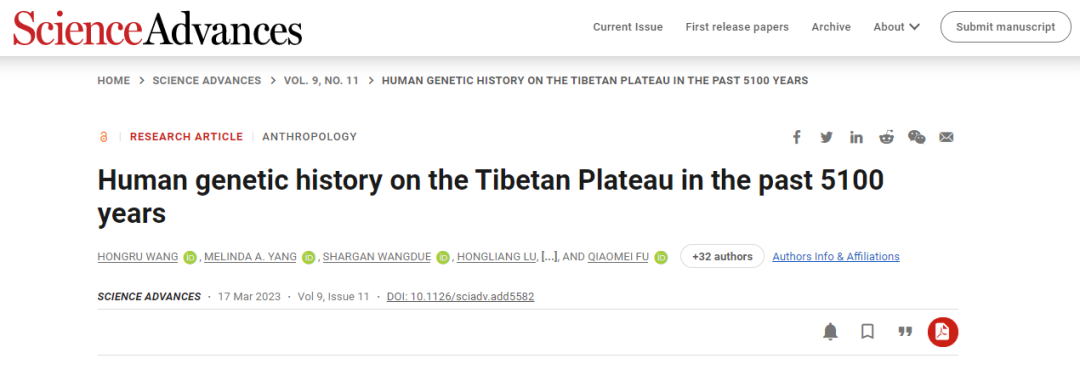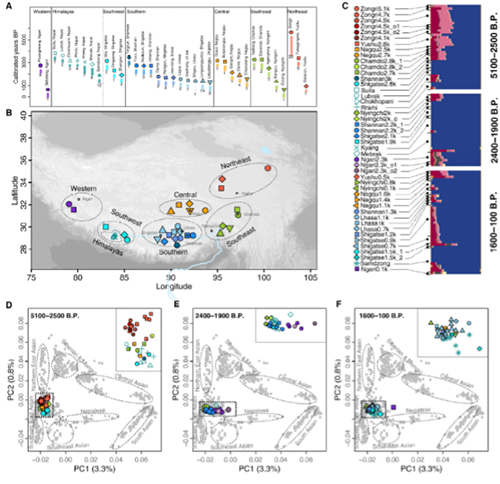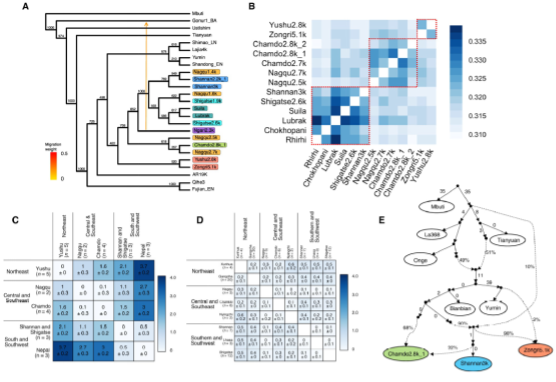
The prestigious scientific journalScience Advances recently published online a paper titled "Human Genetic History on the Tibetan Plateau in the Last 5100 Years", which was completed by Hongliang LV's team from the School of Archaeology and Museology of SCU together with Qiaomei Fu’s team from the Institute of Vertebrate Paleontology and Paleoanthropology of the Chinese Academy of Sciences. The co first authors of this paper are Hongru Wang, a research fellow form the Agricultural Genomics Institute at Shenzhen, Chinese Academy of Agricultural Sciences, Melinda A. Yang, an assistant professor at the University of Richmond, United States, and Hongliang Lv from Sichuan University Center for Archaeological Science. The corresponding author is Qiaomei Fu, a research fellow of the Institute of Vertebrate Paleontology and Paleoanthropology, the CAS.
“The Tibetan Plateau, with elevations often exceeding 4000m above sea level---,is one of the most inhospitable places ever inhabited by humans. Archaic humans known as Denisovans were present on the Northeastern regions of the plateau by at least 160,000years, and early modern humans appeared on the central plateau at least40,000to 30,000years ago. However, the permanent settlement of modern humans on the plateau, and the relationship of present-day Tibetans to early occupants of the plateau are much debated. ---, some of these studies suggest that more deeply diverged populations likely also contributed to the ancestral gene pool of Tibetans today. Ancient DNA from past humans living in the Himalayan arc on the southwest edge of the Tibetan Plateau has shown that humans in this region dating back to 3400 years share a unique ancestry with present-day Tibetans.” (Introduction)

Fig. 1. Chronological, geographic distribution and genetic landscape of ancient individuals of the Tibetan Plateau. (A) Dating and number of individuals sampled per site. Thick lines show the 95% confidence interval(CI) for radiocarbon dating for all samples at a site, and thin lines denote dates estimated from archaeological contexts. Asterisks denote previously published individuals. Colors indicate the seven regions of the Tibetan Plateau in which each site is grouped, as well as denoted on the map. (B) Geographic location of each site, with the seven regions given by the dashed circles and color. Gray dots denote the capitols of the associated prefectures on the Tibetan Plateau, written in gray.

Fig. 2 Population structure in ancient Tibetans. (A) Maximum likelihood phylogeny with one migration edge inferred with Tree Mix. Colors indicate geographic lo-cation on the Tibetan Plateau: pink, northeast; blue, south and southwest; orange, central; green, southeast; purple, west. Numbers indicate bootstrap support from 1000replicates. Original phylogeny with branch lengths can be found in fig. S19.
SCU has been devoted to archaeological research on the Qinghai-Tibet Plateau. Professor Enzheng Tong supervised the excavation of Changdu Karuo, the first archaeological site in Tibet in the 1980s. Over the past few decades, distinguished professors Wei Huo and Yongxian Li led SCU teachers and students to conduct a series of important archaeological excavations in multiple regions of the Qinghai-Tibet Plateau, achieving fruitful research results. Based on archaeological research on material and cultural factors, they outlined the history of cultural interaction and ethnic integration in ancient times on the plateau, and proposed the "Plateau Silk Road" concepts such as "western Himalayan archaeological complex".
https://www.science.org/doi/epdf/10.1126/sciadv.add5582
